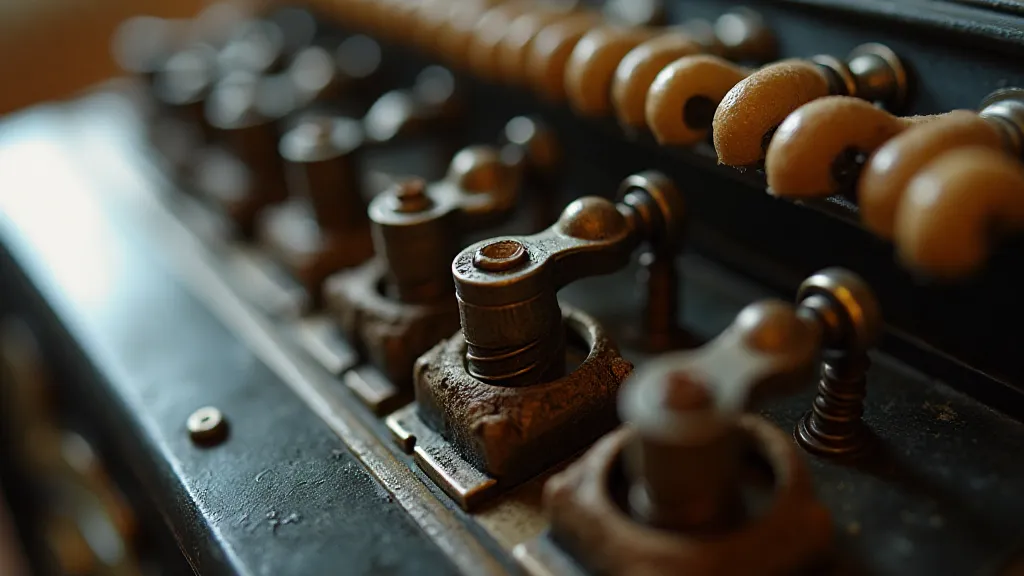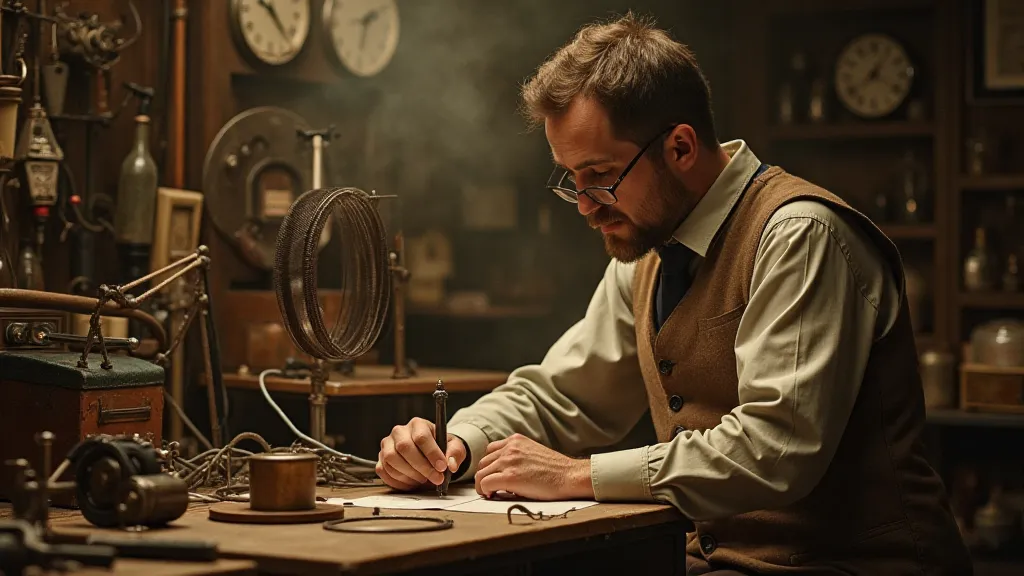Echoes in the Iron: Historical Applications of Magnetism
The subtle hum of magnetism is woven into the very fabric of our existence, a force we often take for granted. We’re surrounded by its influence, from the magnetic stripe on our credit cards to the speakers that fill our rooms with music. But its story doesn’t begin with microchips and modern technology. It’s a narrative stretching back millennia, a quiet revolution echoing in the iron itself. It’s a history intertwined with navigation, industry, and the relentless pursuit of understanding the universe. I recently came across a beautifully restored antique accordion, its bellows meticulously repaired, its sound as rich and resonant as the day it was crafted. Examining it, I realized the intricate mechanics, the precision of its moving parts, represented a level of craftsmanship reliant on a fundamental understanding of forces – forces magnetism helped shape.

The Ancient Compass: Navigating by the Invisible
The earliest documented use of magnetism that truly impacted human civilization arose in China. Before GPS, before even reliable maps, sailors relied on the stars, rudimentary compasses and an intuitive understanding of the world. But the development of the magnetic compass around the 11th century marked a profound shift. Originally, lodestones – naturally magnetized iron ore – were simply floated in water, their movements indicating the direction of magnetic north. Imagine the wonder of realizing that a stone could consistently point towards an unseen force! The compass wasn’t just a navigational tool; it was a window into a hidden realm, inspiring a sense of awe and challenging existing perceptions of the cosmos. The Chinese employed these early compasses for Feng Shui practices, believing they could harmonize the flow of energy in buildings and landscapes – another testament to the pervasive influence of magnetism. The principles behind Feng Shui are complex, encompassing far more than just magnetic fields, but the early application highlights the desire to understand and harness unseen forces.
Magnetism and the Industrial Revolution
Fast forward to the 18th and 19th centuries, the crucible of the Industrial Revolution. The development of electricity brought with it a new appreciation for the relationship between magnetism and electrical currents. Michael Faraday's groundbreaking experiments in 1821 proved that a changing magnetic field could induce an electric current – a principle that underlies almost all of our modern electrical generators. Think about the massive coal-fired power plants, quietly converting mechanical energy into electrical power through rotating magnets and coils of wire. This seemingly simple interaction unlocked unprecedented power, propelling the Industrial Revolution to new heights. Early inventors also dreamt of a future where magnetism could be the key to propulsion, a concept that could be considered a nascent form of what we might now describe as magnetic levitation. The fascination with harnessing magnetism’s power to move objects without physical contact ultimately influenced many of the innovations of the era.
The impact extended beyond power generation. Electric motors, utilizing the interaction between magnetic fields and electric currents, revolutionized manufacturing. Textile mills, once powered by water wheels, could now operate continuously, leading to mass production and transforming industries. The clang of machinery, the relentless rhythm of production – all made possible by a deeper understanding of magnetism. The challenge, of course, was to build these motors efficiently. The earliest designs weren't as refined as we might expect. Achieving a truly effective and powerful interaction between magnetic fields and electrical current was a complex engineering problem that required experimentation and innovation.
Early Electric Motors: A Dance of Forces
The first rudimentary electric motors were fascinatingly clunky things. They weren't the sleek, efficient devices we know today. Early designs often involved rotating coils of wire within a magnetic field, creating a torque that could be used to perform work. These motors, though less efficient than their modern counterparts, represent a pivotal moment in technological history. They demonstrated the practical application of magnetic principles, paving the way for the electric revolution. The inherent inefficiency of these early motors led some to ponder alternative pathways to harness magnetic forces – ideas that, while not immediately successful, hinted at future possibilities. A keen observer, considering the initial challenges of early electric motors, might have asked: could we manipulate magnetic fields in ways that would be more compelling, a concept that would later inspire artists and thinkers to explore building with attraction and dissociation and the possibilities of magnetic interactions with art. It’s fascinating to consider the interplay between early technological advancements and creative exploration – a relationship that continues to shape our world today.
The Rise of Electromagnetism and Scientific Inquiry
The 19th century also witnessed a surge in scientific inquiry surrounding electromagnetism. James Clerk Maxwell unified electricity and magnetism into a single, elegant theory – Maxwell's equations. These equations not only described the behavior of electric and magnetic fields but also predicted the existence of electromagnetic waves, including light. This profound understanding transformed our comprehension of the universe, blurring the lines between electricity, magnetism, and optics. The pursuit of knowledge, fueled by curiosity and ingenuity, continually pushed the boundaries of what was possible. The understanding of the fundamental relationship between electricity and magnetism wasn’t limited to the purely scientific realm; it also had a profound impact on artistic expression, prompting explorations of how magnetism could influence perception and create unique visual experiences.

Rare Earth Magnets: A Modern Marvel Built on Ancient Principles
While the early applications of magnetism were based on naturally occurring materials like lodestone, the 20th and 21st centuries have seen the development of incredibly powerful rare earth magnets. Neodymium magnets, for example, offer significantly stronger magnetic fields than iron or even lodestone. These advancements rely on refined metallurgical processes and a deeper understanding of material science. The accordion I encountered was a testament to the precision of older craftsmanship, but imagine the possibilities if those same skilled hands had access to neodymium magnets – the possibilities for intricate, miniature mechanisms would be astounding. The precision required to manufacture and implement these advanced magnets exemplifies the continued refinement of our understanding of magnetic phenomena. The advancements in materials science are often driven by the desire to unlock ever more powerful and versatile magnetic capabilities.
Restoration and Appreciation: Echoes of the Past
Restoring antique instruments and machines isn't just about preserving physical objects; it's about preserving stories. When you carefully repair a vintage electric motor, you're connecting with the ingenuity of the inventors who first harnessed the power of magnetism. When you meticulously clean and reassemble an antique accordion, you're appreciating the skill and artistry of the craftsman who built it. These objects are tangible links to the past, offering a glimpse into the evolution of technology and human endeavor. They remind us that even seemingly simple devices are the result of decades, even centuries, of innovation. The dedication required to restore these artifacts speaks to a deep respect for the ingenuity and craftsmanship of previous generations. The challenges of restoring these old machines often lead to a deeper understanding of the principles behind their operation. Collecting these historical artifacts can be equally rewarding. Beyond the aesthetic appeal, you gain a deeper appreciation for the historical context and technological advancements that shaped our world.

The Future of Magnetism: A Continuing Narrative
The story of magnetism doesn’t end here. Ongoing research continues to push the boundaries of what's possible, exploring new materials, refining existing technologies, and discovering new applications. From medical imaging to energy storage, the influence of magnetism continues to shape our lives. As we move forward, we carry the echoes of the past, acknowledging the contributions of those who first unlocked the secrets of this fundamental force. The quiet hum of magnetism, once a mystery, now resonates as a powerful testament to human ingenuity and the relentless pursuit of knowledge. Further exploration into the manipulation of magnetic fields, combined with advancements in other scientific disciplines, promises to yield even more transformative technologies in the years to come. The possibilities are truly limitless, and the story of magnetism is far from over. From seemingly impossible artistic concepts to revolutionary scientific discoveries, the study of magnetism continues to inspire and challenge us to push the boundaries of what we believe is possible.





